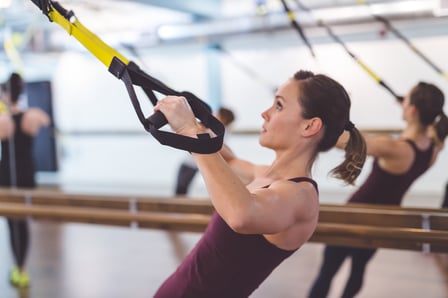 Improving maximal aerobic capacity, aka VO2Max, as well as lactic threshold can have a huge impact on overall performance. You can improve VO2 max through long slow distance (LSD) training, pace and tempo training, interval training, high-intensity interval training, and fartlek training.
Improving maximal aerobic capacity, aka VO2Max, as well as lactic threshold can have a huge impact on overall performance. You can improve VO2 max through long slow distance (LSD) training, pace and tempo training, interval training, high-intensity interval training, and fartlek training.
Training by Experience Level
Training to improve your aerobic capacity varies according to your experience level:
- If you are just starting to train to be an endurance athlete, I suggest that you stick with a long slow distance training until you build your aerobic base, which would be more for mileage/time rather than overloading your lactic threshold and VO2 max.
- If you are an intermediate endurance athlete, you should add one hard workout day (pace or tempo interval, high-intensity interval, or a fartlek) and a higher-mileage day than your usual LSD mileage.
- If you are an advanced endurance athlete, train one or two days with the pace and tempo interval training, high-intensity interval training, or fartlek training. You should also have a high-mileage day that is higher than your LSD days.
Training by Goals
Keep in mind, all this training is also dependent on your training goal. For instance, if you are training for cycling, a full marathon, a cross-country or track event, or are a casual aerobic athlete, long-distance rower or swimmer, and so on, you will want to make sure to have a plan with your goals in mind. Be sure to implement these training methods into your program so that you can hit your goals.
Aerobic capacity and lactic threshold training modules can be tailored to your individual goals and training program. Here are some examples and how they can apply to your training.
- Long slow distance (LSD): Should be race distance or longer and 70 percent of VO2 max, give or take.
- Pace and tempo: Should be done in durations of 20 to 30 minutes at lactate threshold or slightly above.
- Interval training: Should be done 3 to 5 minutes with a work-to-rest ratio of 1:1, and it should be close to VO2 max.
- High-intensity interval training: Should be 30 to 90 seconds with a work-to-rest ratio of 1:5 and greater than VO2 max.
- Fartlek: Has a duration of 20 to 60 minutes and varies between LSD and pace and tempo training intensities.
Keep in mind, some of these norms and training intensities are meant for aerobic distance athletes and are specific to how the training should be done.
Overall, I highly encourage you to play around with these training philosophies and develop it into an aerobic endurance program that is best suited for you. It’s easy to just go out and do the aerobic activity day in and day out, but if you have a more organized, structured program, you will not feel overwhelmed and you will see the gains in your aerobic performance that you have been looking for all along.
This blog was written by David Behrmann, NIFS Health Fitness Instructor. To learn more about the NIFS bloggers, click here.


 Protein bars make a great snack when you’re short on time or don’t have a big appetite. However, these days there are so many different protein bars available to choose from that picking the right one can be difficult. Some protein bars are relatively healthy; however, many are just fancy candy bars with a lot of sugar and saturated fat, and only a few grams of protein. When picking a protein bar, here are the top five
Protein bars make a great snack when you’re short on time or don’t have a big appetite. However, these days there are so many different protein bars available to choose from that picking the right one can be difficult. Some protein bars are relatively healthy; however, many are just fancy candy bars with a lot of sugar and saturated fat, and only a few grams of protein. When picking a protein bar, here are the top five 
 Have you ever started an exercise program and for whatever reason were not able to stick with it? There are many reasons that you may not be able to stick with an exercise program. It might be too hard, and you are not able to maintain the amount of work that is required. Maybe your workouts take too much time, and you are not able to fit it into your schedule. Or maybe you are not seeing the results you want. Whatever the reason that you were not able to find sustainability within your exercise program, there is always a solution. The best way I have found to find sustainability in exercise is to figure out your goals, then pick your programming, and lastly find consistency in your exercise.
Have you ever started an exercise program and for whatever reason were not able to stick with it? There are many reasons that you may not be able to stick with an exercise program. It might be too hard, and you are not able to maintain the amount of work that is required. Maybe your workouts take too much time, and you are not able to fit it into your schedule. Or maybe you are not seeing the results you want. Whatever the reason that you were not able to find sustainability within your exercise program, there is always a solution. The best way I have found to find sustainability in exercise is to figure out your goals, then pick your programming, and lastly find consistency in your exercise.